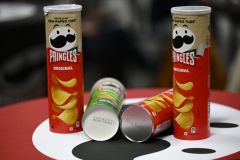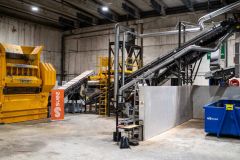Five environmental NGOs - EPN, Fern, EED, Zero Waste Europe and Rethink Plastic - have just published a document entitled " E paper-based disposable food packaging: the false solution to the packaging waste crisis" . The Comité français de l'emballage papier carton (Cofepac) denounces and retaliates against some of the erroneous allegations made in this document, which attack the paper and cardboard packaging sector, a sector already shaken by the discussions surrounding the draft European regulation on packaging and packaging waste.
Misleading interpretation of figures and lack of knowledge of the sector
These organizations point out that paper and cardboard packaging is the leading source of packaging waste in Europe, accounting for 32.7 million tonnes. But they fail to point out that the vast majority of this waste is recycled, recycling rate rises to 81.5% in Europe and 82% in France.
In their view, the manufacture of paperboard requires 50% virgin fiber, whereas in Europe 75% of packaging is made from recycled paper and cardboard and in France this rate rises to 90%.
Another blatant contradiction for Cofepac, when the five NGOs claim that 90% of paper pulp is made from wood. Bad math!
In Europe, the virgin fibers account for 25% of manufacturing most of these fibers come from wood by-products. This figure is reduced to 10% in France. A misleading presentation of data, according to Cofepac, because the figure announced by the organizations should be 90% of the residual 10%, or 9 %âeuros!
A common misconception is that a huge number of trees are felled every year to make packaging. The unsourced figure of 3 billion is given by EPN, Fern, EED, Zero Waste Europe and Rethink plastic.
Cofepac reminds us that much of the wood used in the industry comes from by-products such as sawmill off-cuts thinning, etc. Trees felled if necessary come from plantations complying with eco-responsible specifications.
NGOs claim that composite paper and cardboard packaging is difficult to recycle. The association retorts that "recycling this packaging poses no particular technical difficulties" and "he cardboard industry has long since put in place the structures required for assess the recyclability of its packaging and produce technical recommendations which are now being followed by packaging manufacturers".
An accusation dismissed by Cofepac
"Industry fails to provide figures on paper industry emissions" insist the NGOs. Wrong, says Cofepac "The packaging recycling rate has been calculated by EU member states for several decades according to rules that have been further strengthened following the 2019 revision of the Packaging Directive." and he goes on to point out that in France " these rates are not calculated by the industry, but by Ademe, and are publicly available . In Europe, they are compiled by Eurostat."














